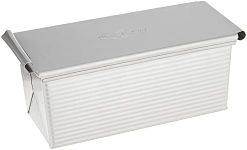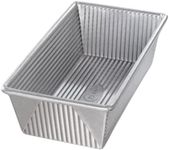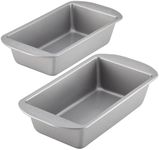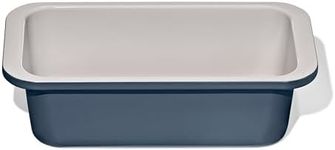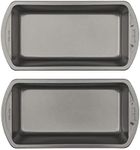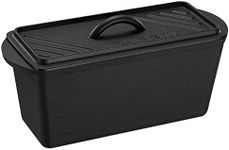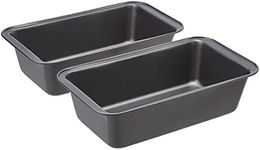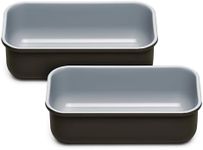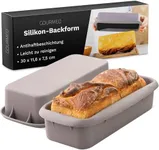Buying Guide for the Best Loaf Pans
Choosing the right loaf pan can make a significant difference in your baking results. Whether you're making bread, cakes, or meatloaf, the right pan will ensure even cooking, easy release, and the perfect shape. When selecting a loaf pan, consider the material, size, shape, and additional features that will best suit your baking needs.MaterialThe material of a loaf pan affects heat distribution, cooking time, and ease of cleaning. Common materials include metal, glass, ceramic, and silicone. Metal pans, such as aluminum or stainless steel, heat up quickly and provide even cooking, making them ideal for bread. Glass and ceramic pans retain heat well, which is great for consistent baking but may require longer cooking times. Silicone pans are non-stick and flexible, making them easy to clean and store, but they may not provide as even heating as metal or glass. Choose a material based on your baking preferences and the type of recipes you frequently make.
SizeLoaf pans come in various sizes, typically measured in inches or by volume. Common sizes include 8.5 x 4.5 inches, 9 x 5 inches, and mini loaf pans. The size of the pan will affect the baking time and the final shape of your loaf. Smaller pans are great for individual servings or smaller batches, while larger pans are suitable for family-sized loaves. Consider the recipes you use most often and choose a size that matches the recommended pan dimensions to ensure proper baking.
ShapeWhile most loaf pans are rectangular, there are variations in shape that can affect the appearance and texture of your baked goods. Standard loaf pans have straight sides and a uniform shape, which is ideal for traditional bread and cakes. Some pans have slightly tapered sides, which can make it easier to remove the loaf. Specialty pans, such as those with decorative patterns or unique shapes, can add a creative touch to your baking but may require adjustments in baking time and technique. Choose a shape that complements the type of baking you enjoy and the presentation you desire.
Non-Stick CoatingNon-stick coatings on loaf pans can make it easier to release baked goods and simplify cleaning. However, the quality and durability of the non-stick coating can vary. High-quality non-stick pans can provide excellent release and long-lasting performance, while lower-quality coatings may wear off over time. If you prefer a non-stick pan, look for one with a reputable brand and good reviews. Alternatively, you can use parchment paper or grease and flour a traditional pan to achieve similar results. Consider your preference for ease of use and maintenance when deciding on a non-stick option.
Additional FeaturesSome loaf pans come with additional features that can enhance your baking experience. For example, pans with handles can make it easier to transfer in and out of the oven. Pans with lids can help create a uniform shape and prevent over-browning. Some pans are designed to be stackable for convenient storage. Consider any additional features that may be beneficial for your baking needs and choose a pan that offers the functionality you desire.
